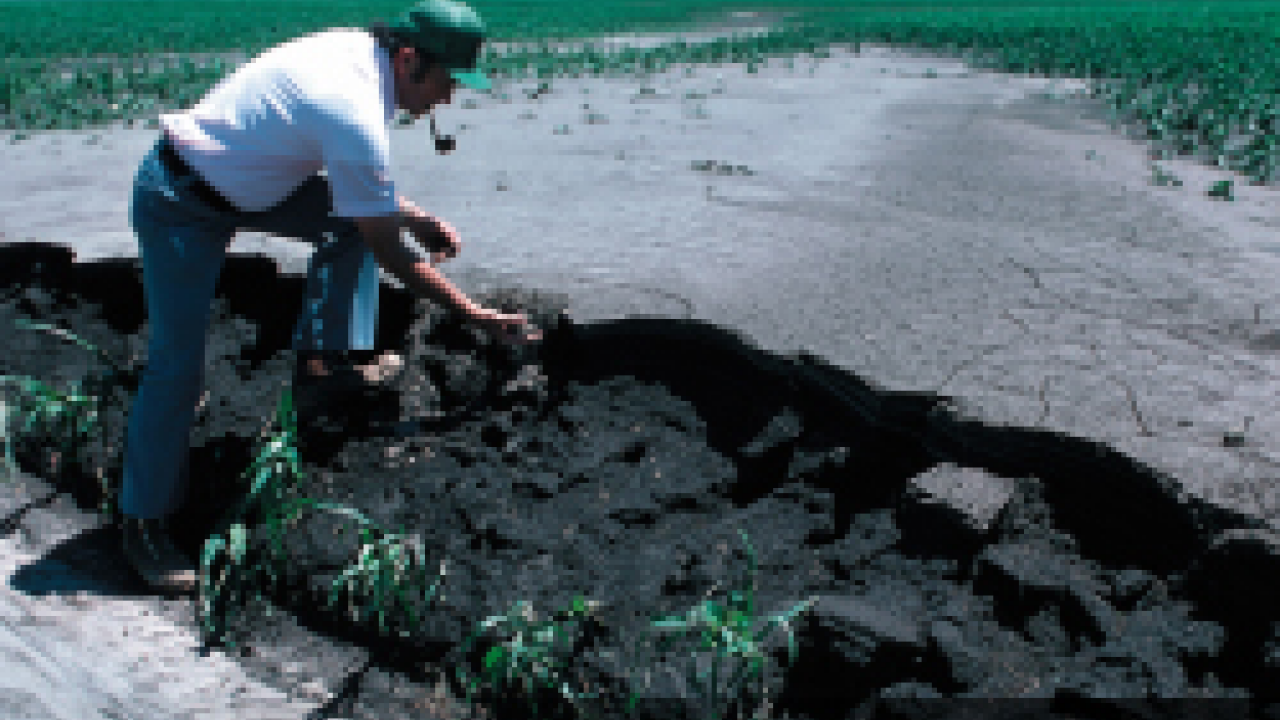
Faster is better, right? So is it a good thing that it now takes only 59 days for an Iowa lake to undergo a change that once took 631 days?
No. Not when we’re talking about how long it takes for a lake to fill up with mud.
According to a new Iowa State University study, before the first European settlers reached what is now Iowa, it took 631 days for a single millimeter of sediment (that’s four-hundredths of an inch, less than the diameter of a regular pencil lead) to accumulate on the bottom of Iowa lakes. It now takes just 59 days.
Researchers found that while sedimentation rates began to rise as soon as western agriculture arrived, “the largest increases in sediment deposition occurred after 1950, concurrent with agricultural intensification.”
The Iowa State assessment of 32 Iowa lakes showed that more mud has flowed into lakes since agriculture “intensified” dramatically after World War II than over the previous 100 years of western agriculture, in spite of the $294 billion (inflation adjusted) that federal taxpayers have spent since 1935 on soil conservation measures to encourage farm businesses to control this pollution.
The sediment smothers aquatic life and carries with it excess phosphorus. Combined with the excess nitrogen supplied by modern agriculture, this sometimes creates toxic algal blooms and makes waters unswimmable. The algal blooms also deplete oxygen in the water, resulting in fish kills in Iowa and contributing to the notorious “dead zone” in the Gulf of Mexico.
The new study is the latest in a series of reports showing that agricultural “business as usual” is not stemming the tide of pollution from farming operations:
- Data assembled by the Iowa State Daily Erosion Project has shown that soil erosion regularly exceeds “sustainable” levels. EWG’s analysis of the data showed that many farm fields lost 10, 20 and even 100 tons per acre in a single downpour. Much of that mud ends up in Iowa’s lakes, streams and rivers.
- Iowa Department of Natural Resources’ Water Quality Index data show that 60 percent of monitored stream segments in the state were in “poor” or “very poor” condition on average between 2008 and 2011, largely because of pollution from fertilizers and manure applied to farm fields. Another 39 percent of the stream segments were in “fair” condition and only 1 percent in “good” condition. None were rated “excellent.” EWG’s statistical analysis of these data showed that Iowa streams will be just as polluted in 10 years unless aggressive action is taken to stem polluted farm runoff.
- EWG’s Troubled Waters report traced the cascade of threats that overloading Iowa’s water with fertilizer and manure runoff poses to human health. Excess nitrogen in water can cause blue baby syndrome in infants, and algae and cyanobacteria blooms generate excess organic matter that water treatment plants must handle carefully to avoid creating carcinogens. The same cyanobacteria blooms can produce toxins that directly harm the liver and nervous system. The multi-billion dollar burden of removing agricultural pollution from drinking water falls not on the farm businesses that produce it but on taxpayers. Nationally, the cost of removing nitrogen alone is $4.8 billion a year, with many millions more to remove organic matter and cyanotoxins.
It is painfully clear that voluntary incentives alone are failing to clean up Iowa’s polluted water. The same is true of 125,006 miles of streams and 1.26 million acres of lakes across the nation that EPA reports being polluted primarily by agriculture.
We need a basic standard of care that defines the measures landowners must take to prevent polluting lakes, streams and drinking water. We are not proposing that every farmer get a permit from EPA. We are proposing a standard that asks landowners to implement simple but highly effective steps – such as leaving a strip of grass or trees between stream banks and their row crops, preventing livestock from trampling stream banks, and healing the gullies that scar too many Iowa farm fields. In addition, we need well- and securely funded voluntary programs that encourage landowners to go even beyond this basic standard of care.
Progress must be measured in the water, not in dollars spent or practices deployed. The new Iowa State sedimentation study adds another layer to the growing mountain of evidence that business as usual will not deliver the clean water that Americans deserve.



